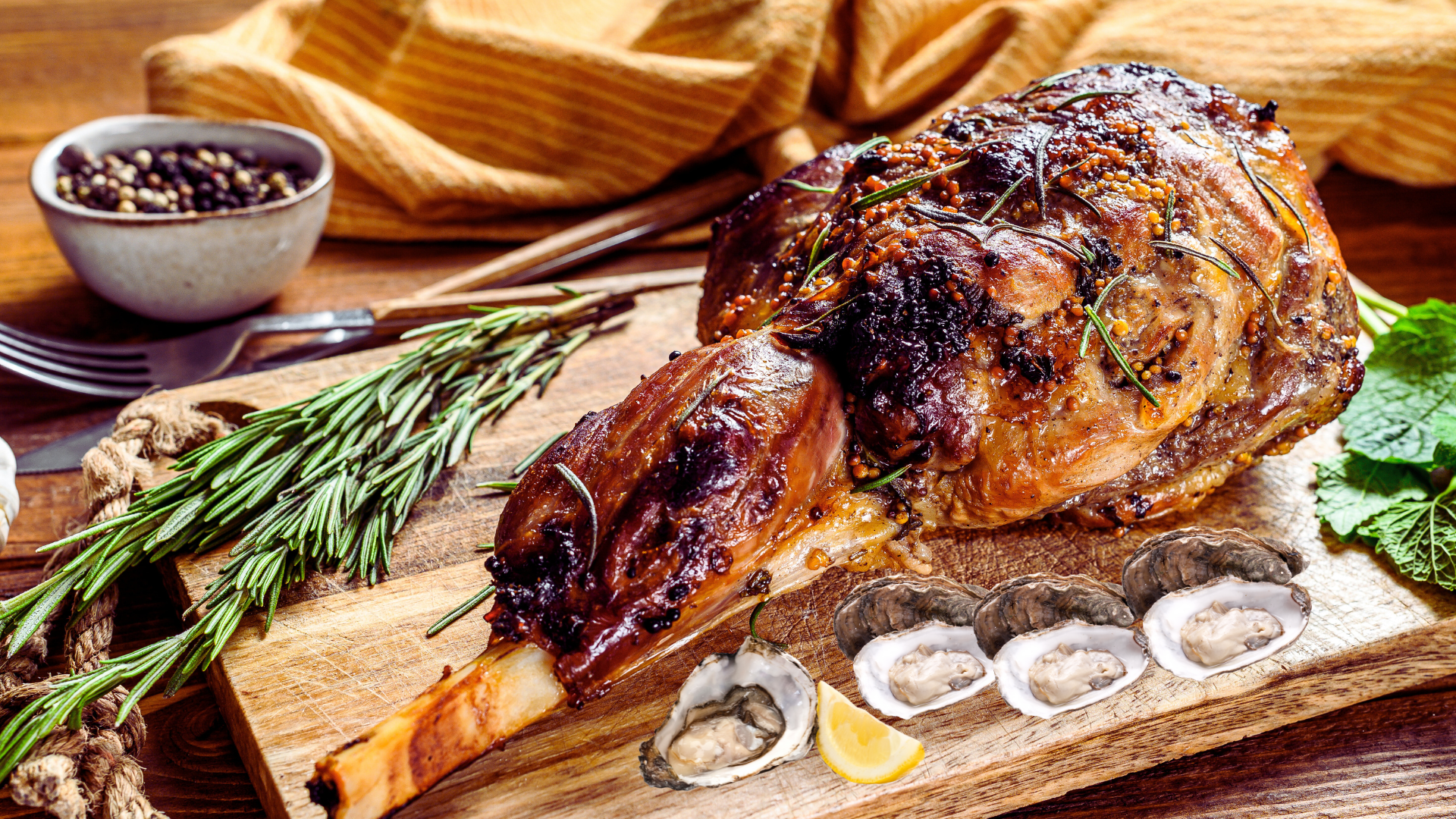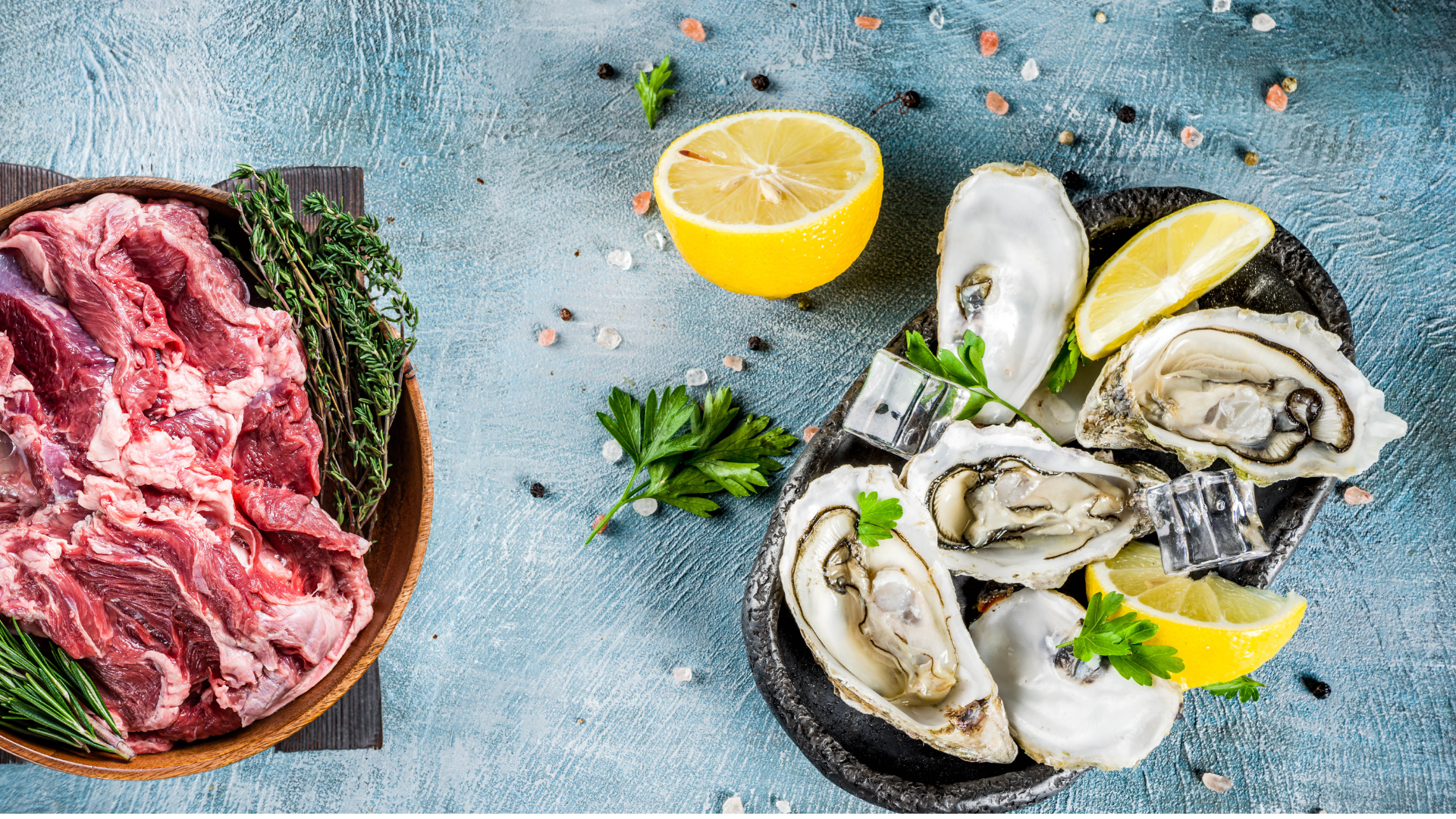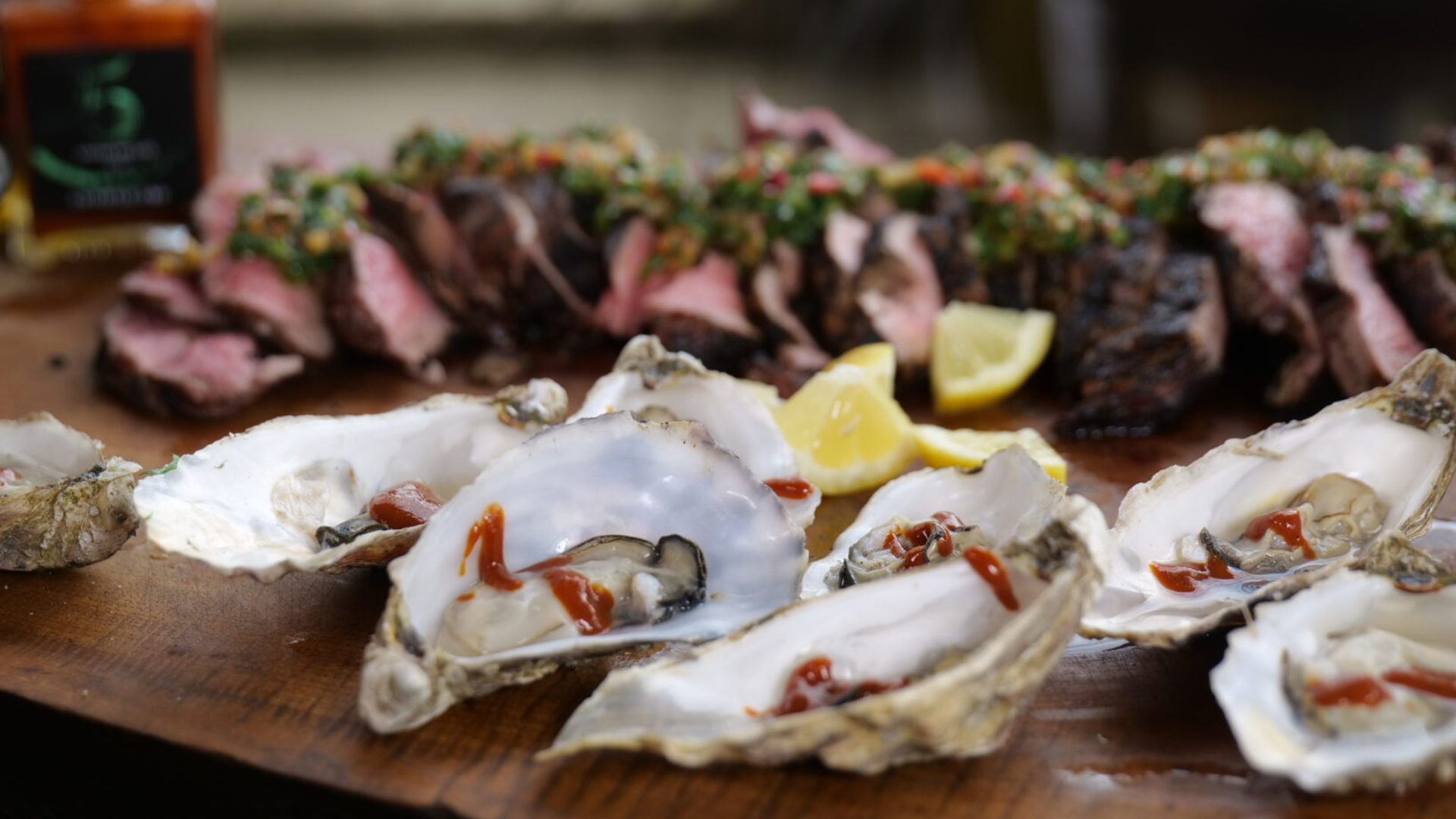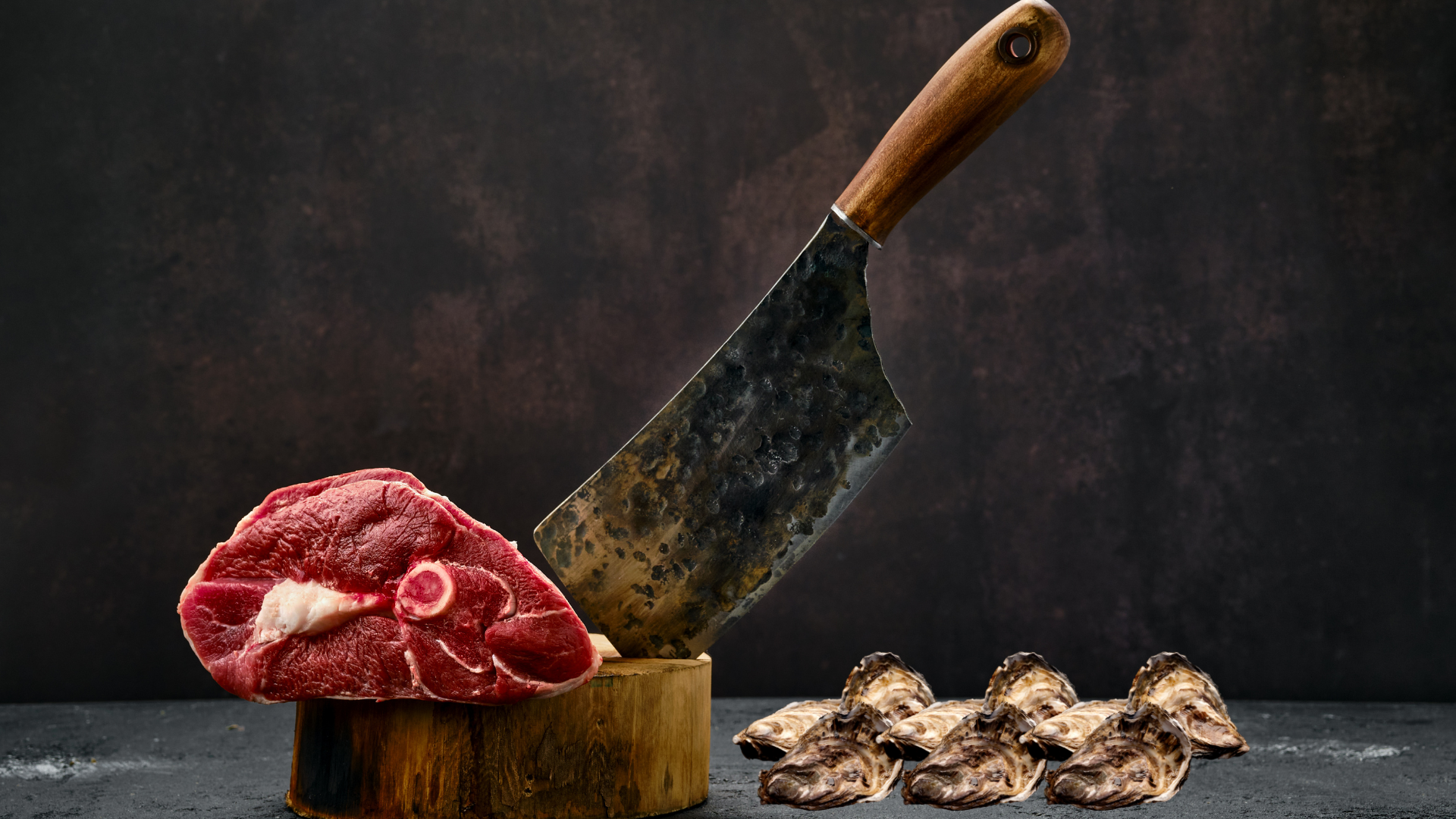
Leg of Mutton With Oysters
Leg of Mutton with Oysters (in French, Gigot d'Agneau aux Huîtres) is a dish that combines the rich, earthy flavors of roasted mutton or lamb with the briny, delicate taste of oysters. While the combination might seem unusual today, mutton and oysters were popular ingredients in French and European cuisine, especially in the 18th and 19th centuries, when seafood was often paired with meat in elaborate dishes served at banquets and royal tables.

Rub a leg of mutton thoroughly with salt, then place it on the spit to roast over a clear fire, regularly basting with its own juices. When it’s nearly cooked, remove it from the heat and use a sharp knife to make small cuts all over. Insert an oyster into each incision, then return the mutton to the fire to finish roasting.
Before serving, skim the gravy to remove excess fat, then bring it to a boil along with a glass of red wine for added flavor.
History of Leg of Mutton with Oysters
Medieval and Renaissance Influence
In medieval Europe, the use of oysters in both noble and peasant cooking was common. Oysters were abundant and accessible, particularly in coastal areas like Normandy, Brittany, and Aquitaine in France. These regions were known for their oyster beds, and the shellfish became a staple ingredient in French culinary traditions.
During the Renaissance, especially in wealthy households, there was a penchant for combining seemingly contrasting flavors and textures. Meat and seafood were often paired together to create rich, extravagant dishes that demonstrated the wealth and sophistication of the host. Oysters, being considered a delicacy, were often used to embellish dishes that featured heavier meats like beef, mutton, and pork.
18th and 19th Century French Cuisine
By the 18th century, oysters were a highly prized luxury in French and British culinary circles. At this time, mutton (the meat of an adult sheep) was widely consumed, often favored for its strong flavor and suitability for long, slow cooking. Pairing it with the delicate brininess of oysters helped balance the intense flavor of the mutton, making the dish both rich and refined.
As French cuisine became more codified in the 19th century, thanks to the rise of haute cuisine and the development of the French culinary schools, combinations like leg of mutton with oysters became fashionable in both aristocratic and bourgeois households. The dish was celebrated for its complexity and the sophisticated combination of land and sea elements. It was particularly popular during special occasions or holidays when lavish meals were expected.
Decline and Revival
As the 20th century brought shifts in culinary trends toward lighter and simpler fare, mutton began to fall out of favor, being replaced by the more tender and mild lamb. However, Gigot d'Agneau aux Huîtres remains a reminder of a bygone era of opulent French cuisine. Today, the dish is less commonly found on restaurant menus but has seen periodic revivals among chefs who enjoy rediscovering historical recipes and bringing traditional flavors back to the table.

-
(Gigot d'Agneau aux Huîtres)
Ingredients:
1 leg of mutton or lamb (about 2.5 kg or 5-6 lbs)
2 dozen fresh oysters (shucked, with their liquor reserved)
4 cloves garlic (cut into slivers)
2 onions (sliced)
2 tbsp olive oil or melted butter
2 sprigs fresh thyme
1 bay leaf
Salt and freshly ground black pepper
1 cup dry white wine (optional)
1/2 cup heavy cream (optional, for finishing sauce)
1 tbsp flour (for thickening sauce)
Fresh parsley (for garnish)
Instructions:
Prepare the mutton:
Preheat the oven to 160°C (325°F). Pat the leg of mutton or lamb dry with paper towels. Use a sharp knife to make small incisions all over the meat. Insert slivers of garlic into the incisions to infuse the meat with flavor.
Rub the mutton with olive oil or butter, and season generously with salt and pepper. Place a few sprigs of fresh thyme and the bay leaf on top.
Roast the mutton:
In a large roasting pan, lay the sliced onions as a bed for the mutton. Place the seasoned mutton on top of the onions. Add about 1 cup of water or white wine to the roasting pan to keep the meat moist during cooking.
Roast the mutton in the oven for about 2.5 to 3 hours, basting it occasionally with the juices from the pan. The mutton should be well-done and tender, with a slightly crisp, browned exterior.
If you are using lamb instead of mutton, reduce the cooking time to 1.5 to 2 hours, as lamb is more tender and cooks faster.
Prepare the oyster sauce:
About 15 minutes before the mutton is finished roasting, prepare the oyster sauce. In a saucepan, gently heat the oyster liquor and shucked oysters over low heat, being careful not to overcook the oysters (they should remain tender and just cooked through, about 2–3 minutes).
If you like, you can thicken the sauce by adding 1 tablespoon of flour and stirring to combine. Optionally, stir in heavy cream for a richer sauce and let it simmer for a few more minutes.
Rest the mutton:
Once the mutton is fully cooked, remove it from the oven and allow it to rest for about 10 minutes. This allows the juices to redistribute within the meat, ensuring it remains tender when sliced.
Assemble and serve:
To serve, slice the mutton and arrange the pieces on a large serving platter. Spoon the oysters and their sauce over the top of the mutton. You can garnish the dish with fresh parsley for a pop of color and added flavor.
Serve with roasted vegetables, potatoes, or a simple green salad.

Cultural Significance and Regional Variations
Normandy and Oysters:
The combination of mutton (or lamb) with oysters may seem unusual today, but it makes sense within the context of France’s culinary geography. Normandy, a region in northern France, is famous both for its seafood (particularly oysters) and for raising salt marsh lamb (lamb that grazes in coastal meadows). The natural salinity of both ingredients complements each other beautifully. Salt marsh lamb, known as "agneau de pré-salé," has a unique flavor derived from the briny grasses the sheep eat, making it a perfect pairing with seafood like oysters.
Lamb and Oyster Pairings in Other Cultures:
While the dish is distinctively French, the combination of lamb and oysters is not unique to France. In English cuisine, similar dishes involving lamb or mutton and oysters were also popular during the Victorian era. In both cases, the dish was considered a luxury, as oysters were expensive and often served during festive occasions or special meals.
Leg of Mutton with Oysters is a dish that exemplifies the luxurious, creative spirit of French cuisine from past centuries. By pairing earthy mutton with the ocean’s finest shellfish, this dish highlights the skill of French chefs in combining contrasting flavors and textures. Though not as commonly served today, Gigot d'Agneau aux Huîtres offers a glimpse into French culinary history and is a dish that can still surprise and delight modern palates.

